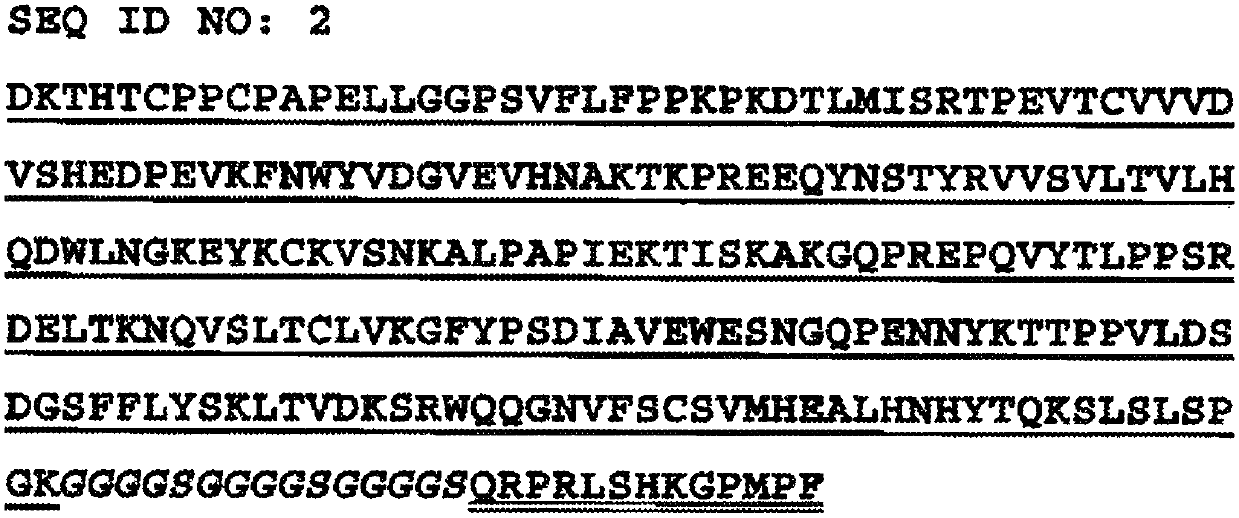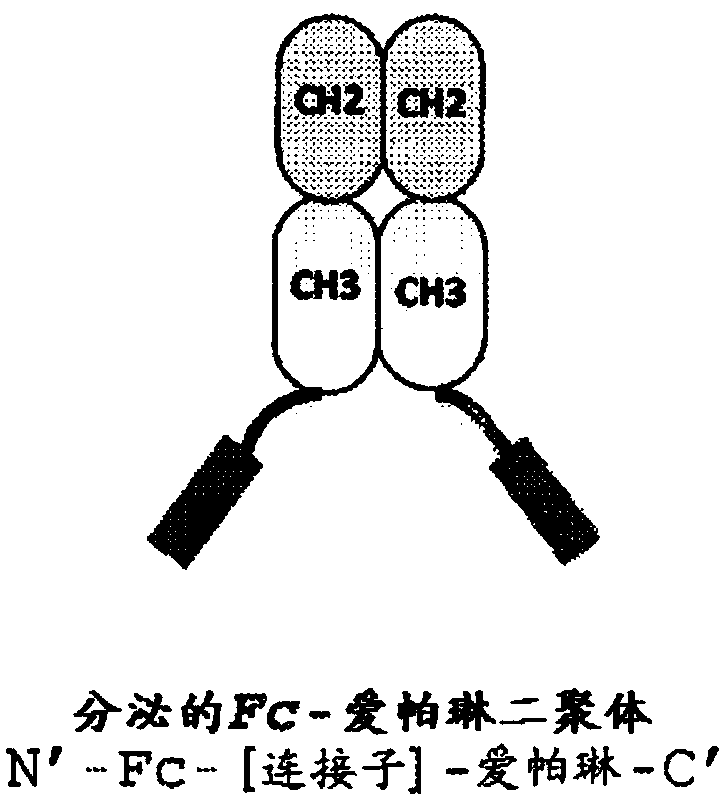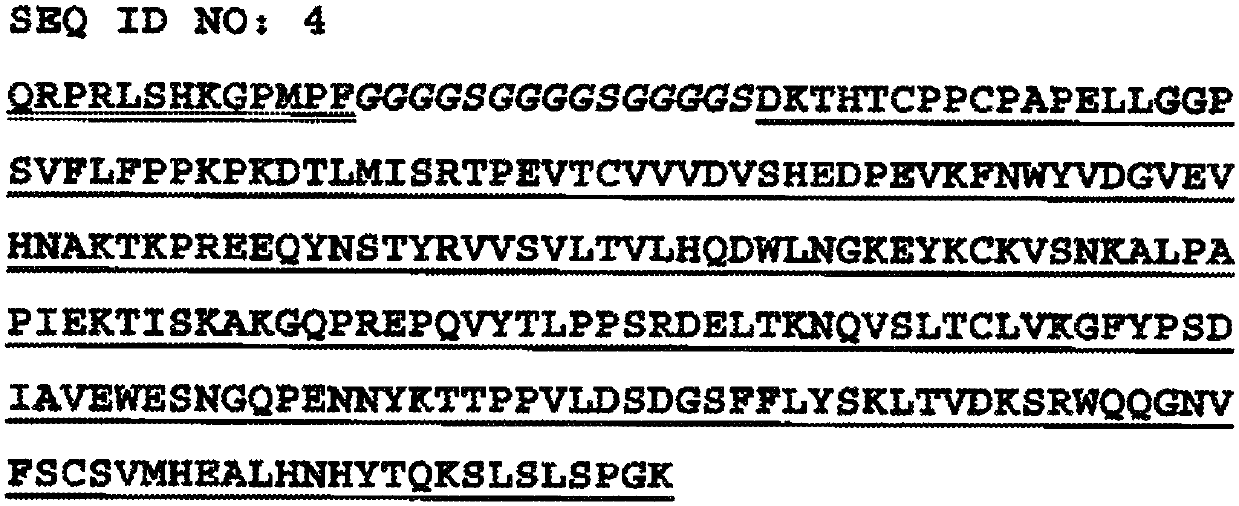Apelin fusion proteins and uses thereof
A palintide-receptor binding technology, applied in the field of fusion proteins, can solve the problems of deficiency and reduced cardiovascular stress ability
- Summary
- Abstract
- Description
- Claims
- Application Information
AI Technical Summary
Problems solved by technology
Method used
Image
Examples
Embodiment 1
[0214] Example 1 - Cloning of expression constructs
[0215] A synthetic gene fragment was used to generate N-terminal and C-terminal hFc fusions with Apelin-13. The DNA encoding the resulting fusions hFc-apalin 13 (SEQ ID NO: 1 ) and apelin 13-hFc (SEQ ID NO: 3) were inserted into an expression vector downstream of the CMV promoter using standard molecular cloning techniques. CHO stable cell lines were generated and used to produce fusion proteins which were then purified by affinity methods. N-terminal hFc-apalin 13 and C-terminal apelin 13-hFc fusion proteins migrated on SDS-PAGE gels consistent with their predicted masses. (see Figure 3A . ) Western blot analysis performed with anti-apalin antibody (Abcam, #ab59469) was used to confirm the presence of apelin on hFc-apalin 13 and apelin 13-hFc. (see Figure 3B . )
Embodiment 2
[0216] Example 2 - Potency and therapeutic effect of Apelin Fc fusion protein in cAMP-reporter gene assay
[0217] Modulation of intracellular cAMP levels by unmodified apelin peptide (Bachem, #H-4568.0001) and the apelin 13 fusion protein of the invention was assessed using a bioassay developed to detect activation of hAPLNR. The HEK293 cell line was transfected together with a luciferase reporter gene [cAMP response element (CRE, 4X)-luciferase] to stably express full-length human hAPLNR (amino acids 1-380 of accession number NP_005152.1). The resulting cell line HEK293 / CRE-luc / hAPLNR was maintained in DMEM containing 10% FBS, NEAA, penicillin / streptomycin, and 100 μg / mL hygromycin B. For the bioassay, HEK293 / CRE-luc / hAPLNR cells were seeded on 96-well assay plates at 20,000 cells / well in 80 μL OPTIMEM supplemented with 0.1% FBS and penicillin / streptomycin / L-glutamine and at 37°C in 5% CO 2 Incubate for 16 hours. The next morning, to measure the inhibition of forskolin-in...
Embodiment 3
[0219] Example 3 - Potency and therapeutic effect of Fc fusion proteins in the β-arrestin assay
[0220] DiscoverX The platform is based on the recruitment of β-arrestin to GPCRs in response to treatment with relevant ligands. In this assay format, β-arrestin is fused to an N-terminal deletion mutant of β-galactosidase (β-gal) and is stably expressed in cells, while the GPCR is fused to a smaller (42 amino acid) , a weakly complementary β-gal fragment. Ligand stimulation of the GPCR in this assay results in the recruitment of β-arrestin to the GPCR, prompting the complementarity of the two β-gal fragments and resulting in the formation of a functional enzyme that converts the substrate into a detectable signal ( DiscoverX Corporation, Fremont, CA, USA).
[0221] For the assay, CHO-K1 / hAPLNR DiscoverX cells were plated at 10,000 cells / well in assay medium (DiscoverX Corporation; #93-0250E2) and incubated at 37°C in 5% CO 2 Incubate for 48 hours. Cells were then treated wi...
PUM
 Login to View More
Login to View More Abstract
Description
Claims
Application Information
 Login to View More
Login to View More - R&D
- Intellectual Property
- Life Sciences
- Materials
- Tech Scout
- Unparalleled Data Quality
- Higher Quality Content
- 60% Fewer Hallucinations
Browse by: Latest US Patents, China's latest patents, Technical Efficacy Thesaurus, Application Domain, Technology Topic, Popular Technical Reports.
© 2025 PatSnap. All rights reserved.Legal|Privacy policy|Modern Slavery Act Transparency Statement|Sitemap|About US| Contact US: help@patsnap.com



